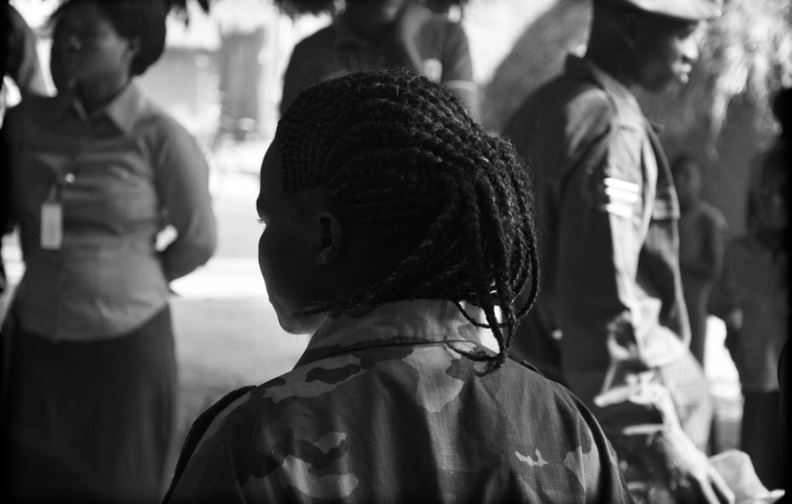New Report: Girls on the Move in Eastern Africa Urgently Need Protection
Thursday, June 28, 2018

More than 2.5 million girls have been forced to flee their homes across eastern Africa and are in urgent need of protection, a new report from World Vision has found.
“We met dozens of girls across 10 countries who have been forced to abandon their education because they were driven from their homes due to conflict or climate change,” says Brenda Kariuki, World Vision’s Director of Advocacy in East Africa. “Too many have been separated from their families and have faced neglect, abuse, exploitation or sexual violence.”
The report, launched by World Vision in Nairobi, calls on the international and national decision-makers to better protect children who have been displaced due to humanitarian crises and fragility.
“Nothing saddens me more than to hear of young girls being forced to give up their education because of conflict. Unfortunately girls on the move are in danger even after they’ve fled violence,” World Vision Australia CEO Claire Rogers says.
“We must strengthen child protection systems worldwide to meet the specific needs of displaced children. Child protection, psychosocial support and education services are critical – and can even be life-saving.”
When Faiza* was 15 years old her village was attacked and she was captured, raped and forced to marry her rapist. For two years, she was held captive, became pregnant and had a baby girl.
“Life was very difficult. My life became one of troubles, of sickness. I suffered a lot, I was not happy, I was thinking of taking my life,” says the girl, originally from the Democratic Republic of the Congo.
When an opportunity came to flee, Faiza left her baby behind and crossed three countries to reach a refugee camp in Kenya.
Similarly, 14-year-old Jackeline was forced to leave her grandmother behind and flee South Sudan on her own when fighting broke out in her village. As a refugee on her own in Uganda, Jackeline felt the only way she could survive was to get married.
‘’I wanted someone who could take care of me, someone to provide my basic needs. I wanted to go back and reunite with my grandmother but I feared she was dead. So I went to the man and asked him to take me as his wife,” Jackeline remembers.
In Tanzania, 16-year-old Scola* became a refugee after fleeing her homeland on her own and struggled to adapt to her new surroundings.
“I still had a mission to have a good life. I became sexually active and started to earn some money out of my secret behaviour,” Scola says.
The report, titled Girls on the Move, enables girls who are refugees or internally displaced to share their story and urges aid agencies, governments and decision makers to act. Girls in Burundi, the Democratic Republic of the Congo, Ethiopia, Kenya, Rwanda, Somalia, South Sudan, Sudan, Tanzania and Uganda have shared their experiences.
“Every child we met told us this is not the life they want. The traumas of war, forced displacement and natural disasters have left too many children extremely vulnerable, stripping away their normal safeguards, placing them in situations of high risk, abuse or exploitation, and often spurring continuing cycles of fear and aggression,” Brenda says.
To end violence against children on the move, protect their rights and develop solutions to the most that affect them, particularly in humanitarian and fragile contexts in the region, World Vision has made nine key recommendations.
“We need to make sure that children come first when we’re responding to humanitarian situations and that they are safe from harm. Girls who have fled their homes need to be able to go to school and have access to support to deal with the violence they may have witnessed or experienced,” says Stephen Omollo, World Vision’s Vice President for East Africa.
*names changed to protect identities
For more information or to arrange an interview contact: Emergencies Communications Officer Brianna Piazza on 0408 624 934 or brianna.piazza@worldvision.com.au
PICTURE: Seventeen-year-old Agnes from South Sudan is one of 2.5 million girls eastern Africa who have been forces to flee their homes.
Media Releases,
Child Violence,
Claire Rogers,
Refugees,
Sexual Abuse,
World Vision
Back to all Results